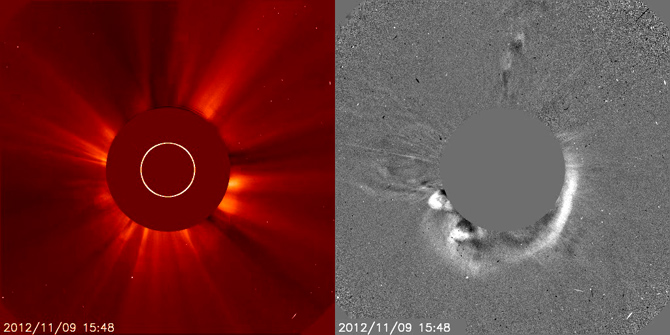
On the left is an image of a CME from Nov. 9, 2012, as captured by the joint ESA/NASA Solar Heliospheric Observatory (SOHO) at 10:48 a.m. EST. The CME can be seen as the light band that appears to be spreading away from the dark disk at the center, which is used to block the bright light from the sun in order to observe the dimmer solar atmosphere. The right image is what’s called a “difference” image, which helps highlights recent changes in any given image, thus making the CME stand out. Credit: ESA&NASA/SOHO/GSFC
On Nov. 9, 2012, at 10:24 a.m. EST, the sun emitted an Earth-directed coronal mass ejection (CME). A CME is a solar phenomenon that can send billions of tons of solar particles into space and can reach Earth one to three days later. CMEs can affect electronic systems in satellites and on the ground.
Experimental NASA research models based on observations from NASA's Solar Terrestrial Relations Observatory (STEREO) and the joint ESA/NASA Solar Heliospheric Observatory (SOHO) show that the CME left the sun traveling at 350 miles per second, which is a slow to average speed for CMEs.
See the website for more details: http://www.nasa.gov/mission_pages/sunearth/news/News110912-cme.html(SY)
